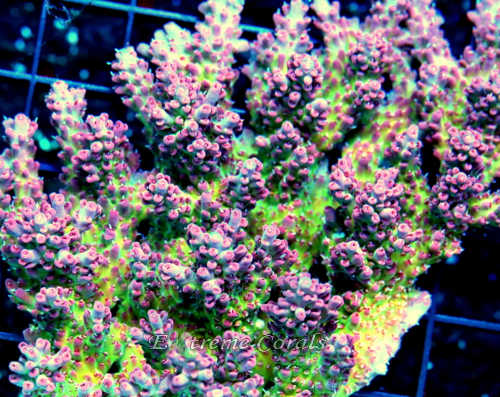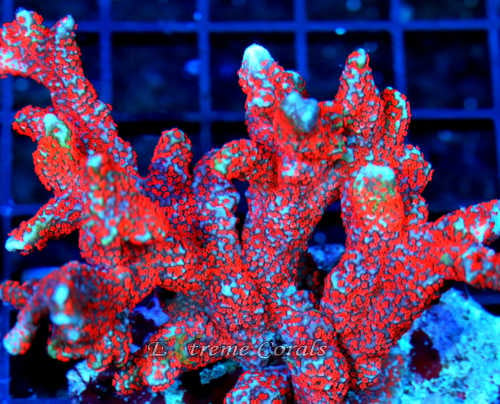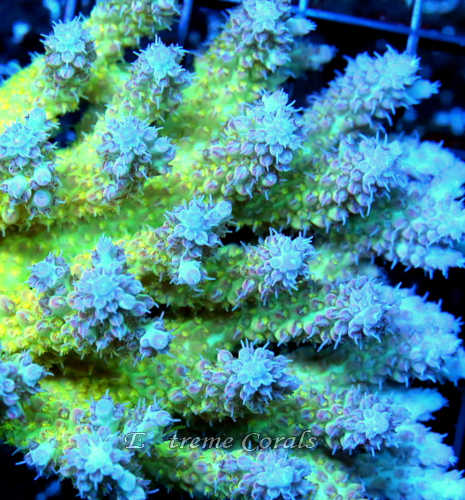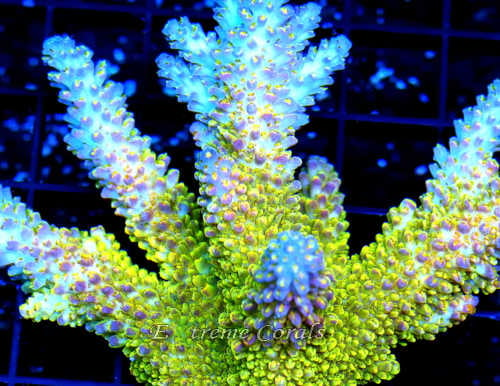Extreme Corals News and Updates
Beginner's Guide to SPS Corals: 10 Popular Choices
Dive into the World of SPS Corals: A Beginner's Guide to 10 Popular Choices
Explore the captivating world of SPS corals with our beginner's guide featuring 10 popular choices. Dive into vibrant colors, unique growth patterns, and expert care tips.
by scott Shiles • February 05, 2024

Welcome to ExtremeCorals! If you're diving into the mesmerizing world of reefkeeping, SPS corals are undoubtedly on your radar. Also known as Small Polyp Stony corals, SPS corals are highly prized and considered the crown jewels of the coral kingdom. These corals belong to a diverse family that includes numerous stunning species, characterized by their vibrant colors and astonishing growth patterns.
SPS corals display an unparalleled range of color variations, boasting fluorescent pinks, blues, purples, oranges, and many other striking hues. It is this unrivaled palette of colors that sets SPS corals apart from other coral types. What makes SPS corals particularly coveted by many hobbyists is not only their vibrant colors but also their unique appearance. These corals showcase intricate and often fragile skeletal structures, creating a mesmerizing visual display. The growth patterns of SPS corals are highly distinctive, forming captivating shapes and branching structures that add to their allure.
In addition to their aesthetic appeal, SPS corals are also highly valued for their challenging care requirements. They demand precise water parameters, intense lighting, and stable water conditions for optimal growth and health. The dedication and attention required to maintain SPS corals make them a coveted choice among experienced aquarium enthusiasts, as successfully keeping these corals can be seen as a testament to the expertise and commitment of the hobbyist.

10 Popular SPS Corals:
- Encrusting Montipora
- Basic Care Instructions: Encrusting Montipora is known for its vibrant colors and unique growth pattern. Ensure ample space for growth and moderate to high lighting.
- Pros: Diverse color combinations, tolerant of varying water parameters, unique growth pattern.
- Cons: Requires medium to high lighting, strong flow necessary to prevent debris buildup.
- Acropora Latistella
- Basic Care Instructions: Acropora Latistella, including the popular Bali Shortcake, thrives in high light and flow environments. Provide ample space for growth.
- Pros: Stunning plating growth form, wide range of colors, becoming more affordable.
- Cons: High light and flow requirements, slow-growing.
- Montipora Digitata
- Basic Care Instructions: Montipora Digitata is relatively easy to keep and comes in various color combinations. Maintain stable water parameters and provide moderate to high flow.
- Pros: Wide range of colors, forgiving nature, peaceful temperament.
- Cons: Fast growth may require careful placement, prefers high flow.
- Acropora Tenuis
- Basic Care Instructions: Known for brilliant colors, Acropora Tenuis requires stable water parameters and low nutrients.
- Pros: Stunning colors, prevalence in aquaculture, potential centerpiece coral.
- Cons: High cost, demanding care requirements.
- Acropora Carduus
- Basic Care Instructions: Acropora Carduus, like the Red Dragon Acro, prefers powerful light and offers unique color variations.
- Pros: Unique thin branches, variety of colors, fast growth.
- Cons: Sensitivity to water quality, fragile branches.
- Acropora Microclados
- Basic Care Instructions: Acropora Microclados, such as the Strawberry Shortcake, requires high light and minimal nutrients.
- Pros: Eye-catching colors, tabling growth pattern, prevalence in the hobby.
- Cons: High light requirements, expensive frags.
- Acropora Echinata
- Basic Care Instructions: Acropora Echinata boasts stunning blue and purple hues but is sensitive to water quality changes.
- Pros: Unique growth form, availability, reasonable price.
- Cons: Susceptible to water quality fluctuations, limited color diversity.
- Acropora Tortuosa
- Basic Care Instructions: Acropora Tortuosa, like the Oregon Blue Tort, offers deep blue coloration but requires ample light and flow.
- Pros: Intense coloration, hardy nature, slow growth.
- Cons: Sweeper tentacles may disturb neighbors, susceptibility to pests.
- Stylocoeniella
- Basic Care Instructions: Stylocoeniella grows fast under good flow and lighting, offering unique texture and colors.
- Pros: Fast growth, unique appearance, peaceful nature.
- Cons: Requires good flow, limited availability in large colonies.
- Acropora Nasuta
- Basic Care Instructions: Acropora Nasuta prefers large amounts of light and offers pastel colors and table-like growth.
- Pros: Pastel colors, table-like growth, suitability to reef systems.
- Cons: Space requirements, potential high cost for unique variations.

SPS Corals: Pros and Cons
Pros:
Cons:
It is crucial to consider both the advantages and drawbacks mentioned above when deciding to introduce SPS corals into an aquarium setup.
For more information check out our friends at acrokingdom and their Comprehensive Guide for Reef Entuisiasts
By following these buying tips, you can increase the likelihood of acquiring healthy SPS corals for your aquarium. Explore our collection at ExtremeCorals to find the perfect addition to your reef tank!

